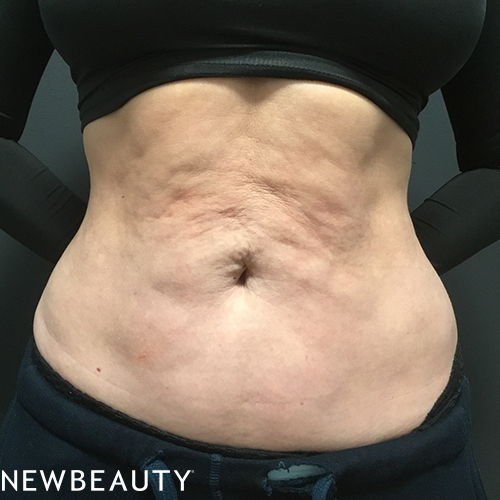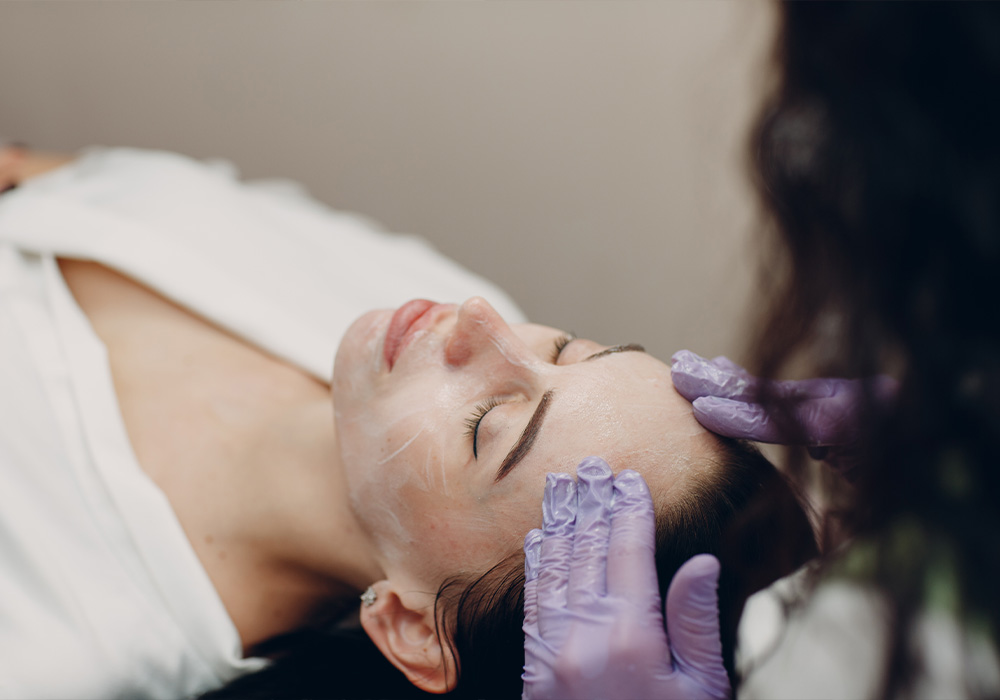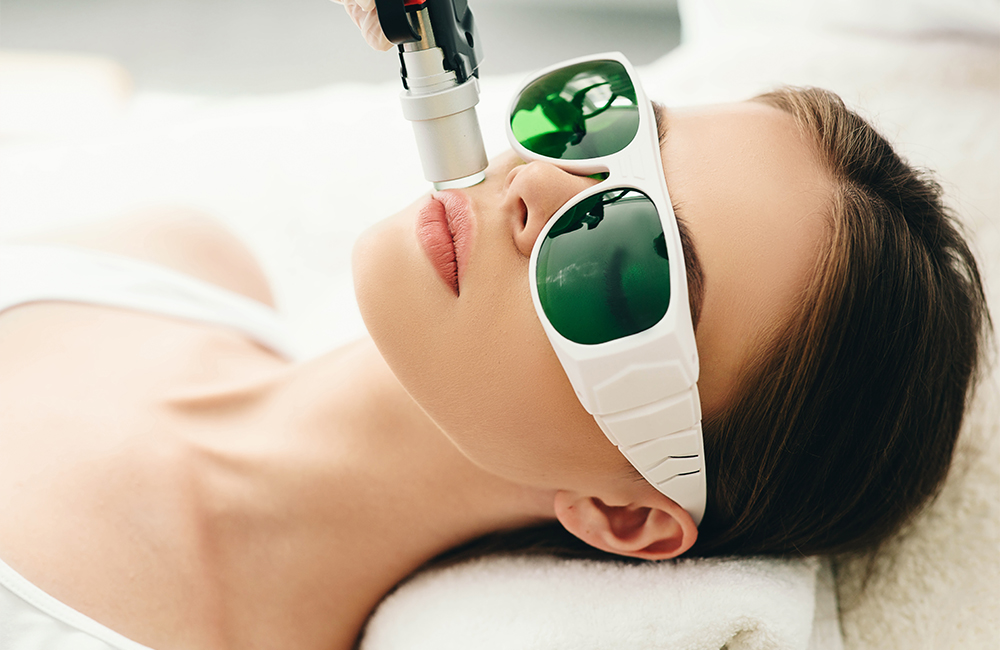It’s no wonder skin-tightening procedures have shown dramatic increases over the last few years. Plastic surgeons, dermatologists and beauty buffs are pioneering new ways to contour everything from the backs of hands to the inner thighs. This is lucky for us, considering we lose about 1 percent of the existing collagen in our skin every year after age 30, explains Chicago dermatologist Carolyn Jacob, MD—and experience the resulting skin sag.
As it stands, there are two major ways to slim when it comes to skin: for minor looseness, energy devices—radio frequency, ultrasound and infrared—can noninvasively penetrate the skin and encourage the formation of new collagen, the structural protein that supports skin’s shape and prevents laxity. Rochester, NY dermatologist Lesley Loss, MD says there are definitely limitations to nonsurgical skin tightening, including duration of effect. “Some results may only last a few months, while others can last one to three years,” she adds.
The second option for addressing slackness is surgery, often reserved for those with greater sagging and usually caused by age-related changes, significant weight loss or general skin damage. “In most cases, patients don’t realize their skin laxity is due to damage that has occurred in the elastic fibers,” Glen Burnie, MD plastic surgeon Adam Summers, MD says. “This is commonly seen as thinning of the skin, which occurs after years of UV exposure or from the use of some medications. Fibers can also be damaged when skin rapidly expands, causing stretch marks.”
The trade-off becomes this: Energy devices require little-to-no downtime, but typically several sessions. And at times, it takes a matter of months to see results, which are not as dramatic as those from surgical procedures. Las Vegas plastic surgeon Mary Herte, MD notes that a tummy tuck—one of the primary surgical contouring options—can have a big payoff aside from the ability to tackle looser skin. “The real key to the amazing success of tummy tucks and the high patient satisfaction rate is the extra benefit of repairing stretched muscles that are often the primary problem associated with a ‘Buddha Belly,’” she says. “Loose skin removal alone does not make a flat stomach. Only recreating that internal corset of muscle can provide that lean appearance.”
Radio Frequency: For skin that is slightly loose
What it is: According to Dr. Jacob, radio frequency, or RF, is a thermalbased technology that selectively heats the outermost layer of skin to induce collagen and elastin production.
How it works: A radio-frequency machine sends alternating currents of radio waves into the skin from the tip of an electrode found in the handheld paddle. The energy reaches and heats the cells in charge of collagen stimulation, though this process needs about 90 days, or three months, to reveal major results.
Brand names: Thermage, Accent, Pellevé, Venus Viva, and IntraGen
What to expect: Though the procedure can be performed without an aesthetic, local anesthesia and numbing creams are both available to help dull any pain. Many doctors say radio frequency can feel akin to a hot stone massage. During the procedure, multiple, overlapping passes are applied to skin in a square pattern, Dr. Jacob says. While patients can be in and out of the chair in as little as 45 minutes, multiple treatments spaced days apart are required for visible skin tightening.
What else to know: Microneedling for enhanced tightening is one combination option that is currently being used on the face.
Price: $600–$1,000, depending on the area of the body
Results duration: Up to three years, but typically less
Just one Thermage FLX treatment, performed by Dr. Jacob, visibly reduced the appearance of wrinkles and laxity in this 52-year-old patient’s neck, jowls and chin three months later.
Ultrasound: For mild-to-moderate skin laxity
What it is: Focused ultrasound, penetrate the skin and induce collagen production, much like radio frequency. The major difference being that ultrasound, and especially high-intensity focused ultrasound (HIFU), can reach much deeper into the skin.
How it works: Using the same technology—different intensity— that provides pregnant women with imaging, ultrasound devices shoot micro-focused sound waves into the skin to warm the cells responsible for creating structural proteins, Dr. Loss says. “This effectively heats the target area to between 65 and 70 degrees Celsius, triggering focal tightening and the stimulation of collagen production,” she explains.
Brand names: Ultherapy and Exilis
What to expect: According to Dr. Loss, each treatment takes about 30 minutes on average, though this varies depending on the area of the body treated and a few treatments are necessary for best results. Because discomfort can be relative, Dr. Loss says most doctors offer several options for pain management. “Many patients need only mild distraction with music and a vibrational device placed on their collarbone,” she notes. “However, we also offer alternatives including nitrous oxide.”
What else to know: A bonus for ultrasound therapy, is that “recovery is purely social in nature,” Dr. Loss says. “If you don’t mind someone asking why you are a little red or have a bruise, then there is no downtime. Otherwise, it may mean a few days of wearing cover-up to hide unwanted redness.”
Prices: $500–$6,000, depending on the area of the body treated
Results duration: As with radio frequency, a few months may pass before results are apparent, and they can sometimes be unpredictable.
“Ultherapy was the best choice for this patient at the time because she needed some skin tightening, but wasn’t ready for a facelift yet,” says Sugar Land, TX plastic surgeon Peter Chang, MD. “She only had one session of nonsurgical Ultherapy to her lower face to get this beautiful result.”
Light-Based Treatments: Best for mild skin laxity, but not for darker skin types
What they are: The two players in the world of light are infrared radiation (IR) and intense-pulsed light (IPL), which is not for tightening but popular in the aesthetic space for pigment irregularities and aging skin conditions like wrinkles and sunspots. IR is “invisible” light with a wavelength so long, it is not detected by human eyes. It reaches into the skin and heats cells like radio frequency and ultrasound do, but is less popular as a skin tightener because the results are often not as dramatic as with other treatment options.
How they work: “Infrared uses light emitted in the IR spectrum, or approximately 800 nm to 1 mm,” says Dr. Loss. “It generates heat and functions to tighten skin by stimulating collagen contraction and neocollagenesis, or new collagen formation.”
Brand names: IR: SkinTyte and Zaffiro
What to expect: In-office infrared procedures shouldn’t exceed an hour. During this time, a cooling gel is spread over the treatment area to mitigate the heat from the device, and a handheld paddle is used to deliver focused pulses of light over multiple passes. At-home devices usually feature cordless wands with infrared capabilities, but require more usage.
What else to know: Infrared is common in physical therapy techniques—it is used to repair sore muscles—and saunas, where it is thought to detox the body by causing increased sweating.
Price: A series of five in-office infrared sessions could cost about $1,000. At-home devices typically run a few hundred dollars.
Results duration: They vary, but can last up to a year—multiple sessions are usually needed.
This 47-year-old patient was concerned with skin laxity and general looseness in her abdomen. To address these concerns, Dr. Loss used the FDA-cleared Zaffiro device with infrared technology to tighten the skin after just one session. Results shown here are immediately following the treatment.
Surgery: For severe laxity that cannot be treated through nonsurgical means
What these are: “Nonsurgical skin-tightening treatments can be quite effective for many patients,” notes Dr. Summers. “However, some don’t respond to nonsurgical treatments, or have significantly damaged skin, so their best option is to have the damaged skin removed.” Many procedures that include the word “lift” or “tuck” are considered to be surgical skin-tightening procedures. This includes a traditional facelift, necklift, tummy tuck, thigh lift, arm lift and others.
How they work: “It should be noted that these procedures do not actually improve the quality of the skin; they just remove the damaged skin that is contributing to the lax appearance,” explains Dr. Summers. “In some cases, nonsurgical treatments can be used in conjunction with surgery to achieve the best results. Patients with sun damage frequently benefit from this dual-modality approach.”
Treatment areas: Varies, but can be the neck, abdomen, thighs, arms or face
What to expect: During any surgery of this sort, excess skin is removed and the remainder is repositioned for a more streamlined appearance. A bodylift, one of the most common surgeries of this type, involves contouring the lower trunk, typically from the buttocks to abdomen, though this can extend to include the upper thighs and upper abdomen where it meets the chest. “During a bodylift, lax skin is removed from the abdomen, pubic region and waistline,” Dr. Summers says. “Then the abdominal muscles are tightened and the remaining soft tissue is lifted and smoothed, resulting in a better body contour.”
What else to know: “Patients who will benefit from a bodylift typically have lost a significant amount of weight and now have hanging skin in the belly and waistline, sagging of the pubic area and bulging of the saddlebag region,” Dr. Summers explains. Variations of tummy tucks, including modified procedures with patients with less tissue laxity above the belly button and reverse tummy tucks for patients with good lower abdominal tightness but looseness above the belly button, can also be an option in the appropriate patient. Although some of these procedures can be outpatient, more extensive surgeries will require an overnight hospital stay and warrant a ride home and outside care for at least one day post-surgery.
Price: Arm lifts and necklifts can cost upwards of $8,000 each; a thigh lift is typically around $10,000; a full bodylift with a tummy tuck could run $30,000.
Results duration: Permanent
To remove excess skin on this 49-year-old patient’s stomach and legs, Dr. Summers performed a full bodylift, complete with liposuction to remove pockets of fat. This was followed by a tummy tuck, a waistline lift and a thigh lift.

























